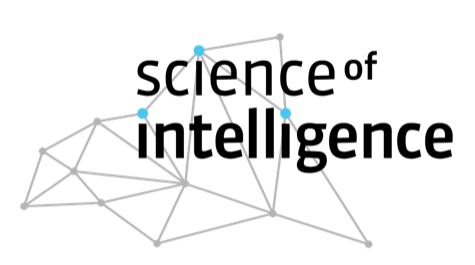Targeted vs. intersectional diversity approaches: why both matter
In earlier impulses of this series, we explored intersectionality as a way to understand overlapping and interconnected aspects of identity, and we used “The Four Layers of Diversity” as a framework for reflecting on the many factors we bring into the workplace. Building on these, this month we look at two related but distinct ways to foster diversity, equity, inclusion, and belonging: targeted diversity measures and a broader intersectional approach.
Targeted diversity measures are initiatives that specifically address underrepresentation or aim to remove barriers for certain groups. In our cluster, examples include participating in Girls’ Day to inspire young women to consider careers in science, organizing workshops for leadership on unconscious bias, or providing a parent–child office to support caregivers in balancing professional and family responsibilities. These actions tackle structural imbalances directly and can lead to visible, measurable results in the short term. At the same time, they can sometimes be perceived as exclusive by those who are not addressed, and there is a risk of focusing only on representation without fostering deeper cultural or systemic change.
An intersectional approach looks at how different aspects of identity, such as gender, ethnicity, class, ability, age, and others, interact to shape opportunities and challenges. Instead of focusing on a single category, it integrates multiple perspectives into everyday structures, decisions, and collaborations. In our context, this includes workshops on non-violent communication that benefit everyone, diversity posters that highlight multiple perspectives, regular surveys to identify areas for improvement, and the active involvement of the Equal Opportunities Committee to ensure diverse voices are part of decision-making. This approach captures the complexity of real-world identities and supports long-term cultural change. However, it is also more demanding to design and evaluate, and its effects may take longer to become visible.
In short, targeted measures open doors for those who have historically been excluded. Intersectional approaches ensure that once inside, everyone can be seen in the full complexity of their identity and contribute meaningfully. Together, they address both representation and equity, access and belonging.
Neither approach works in isolation. Each gains strength from the other. When targeted measures remove barriers, and intersectional thinking shapes strategies and structures, we build academic cultures where diversity is not an add-on but a driving force. It becomes part of how we think, how we collaborate, and how we innovate.
References and further readings :
- Bailey, A. (2009). On Intersectionality, Empathy, and Feminist Solidarity: A Reply to Naomi Zack. Journal for Peace and Justice Studies, 19(1), 14–36. (https://www.researchgate.net/publication/271338679_On_Intersectionality_Empathy_And_Feminist_Solidarity)
- Bowleg, L. (2012). The Problem with the Phrase “Women and Minorities”: Intersectionality—an Important Theoretical Framework for Public Health. American Journal of Public Health, 102(7), 1267–1273. (https://ajph.aphapublications.org/doi/full/10.2105/AJPH.2012.300750)
- Carbado, D. W., Crenshaw, K. W., Mays, V. M., & Tomlinson, B. (2013). Intersectionality: Mapping the Movements of a Theory. Du Bois Review: Social Science Research on Race, 10(2), 303–312. (https://scholarship.law.columbia.edu/cgi/viewcontent.cgi?article=3783&context=faculty_scholarship)
- Cho, S., Crenshaw, K. W., & McCall, L. (2013). Toward a Field of Intersectionality Studies: Theory, Applications, and Praxis. Signs: Journal of Women in Culture and Society, 38(4), 785–810. (https://www.jstor.org/stable/10.1086/669608?seq=1)
- Crenshaw, K. (1989). Demarginalizing the Intersection of Race and Sex: A Black Feminist Critique of Antidiscrimination Doctrine, Feminist Theory and Antiracist Politics. University of Chicago Legal Forum, 1989(1), Article 8. (https://chicagounbound.uchicago.edu/cgi/viewcontent.cgi?article=1052&context=uclf)
- Gardenswartz, L., & Rowe, A. (2003). Managing Diversity: A Complete Desk Reference and Planning Guide. McGraw-Hill
- Johns, S., & Hawkes, S. (2020). A Look at Empathy, University Belonging, and Intersectionality: How to Support a Diverse Student Body amid the COVID-19 Crisis. Journal of Interdisciplinary Studies in Education, 9(2), 10–13. (https://www.ojed.org/index.php/jise/article/view/2407)
- Charta der Vielfalt (n.d.). Dimensionen von Vielfalt. Retrieved August 1, 2025, from https://www.charta-der-vielfalt.de/diversity-management/dimensionen-der-vielfalt/
- Institute for Discrimination and Racism Critical Education. (n.d.). Glossar. Retrieved February 6, 2025, from: https://www.idaev.de/recherchetools/glossar?tx_dpnglossary_glossary%5Baction%5D=list&tx_dpnglossary_glossary%5Bcontroller%5D=Term&tx_dpnglossary_glossary%5BcurrentCharacter%5D=I&cHash=9367410d1e1c89a2dd492f7cc56bc332
- University of Vienna, Human Resources & Gender Equality (n.d.). Dimensions of Diversity. Retrieved August 1, 2025, from https://personalwesen.univie.ac.at/en/culture-equality/diversity/what-is-diversity-about/dimensions-of-diversity/
- European Institute for Gender Equality – Intersectional analysis description: Retrieved on August 12th, 2025: https://eige.europa.eu/publications-resources/thesaurus/terms/1050?language_content_entity=en&utm
- Science of Intelligence – Diversity and Equal Opportunity webpage: congress.gov+7scienceofintelligence.de+7scienceofintelligence.de+7
- Science of Intelligence – Diversity Survey in the Excellence Cluster Science of Intelligence (2024): metis.hu-berlin.de: Retrieved on August 12th, 2025: https://www.metis.hu-berlin.de/best_practice/diversity-survey-in-the-excellence-cluster-science-of-intelligence/?utm





